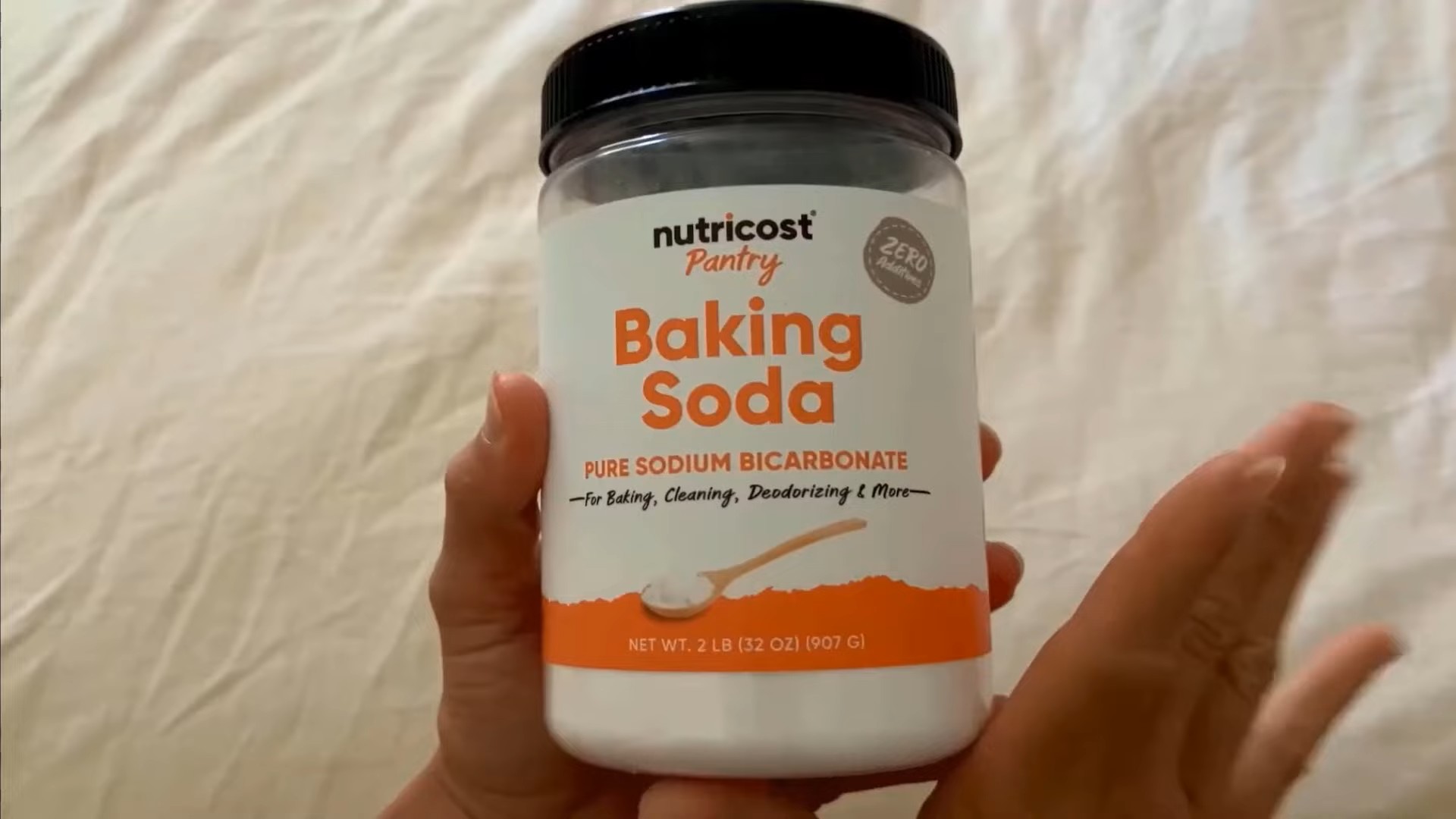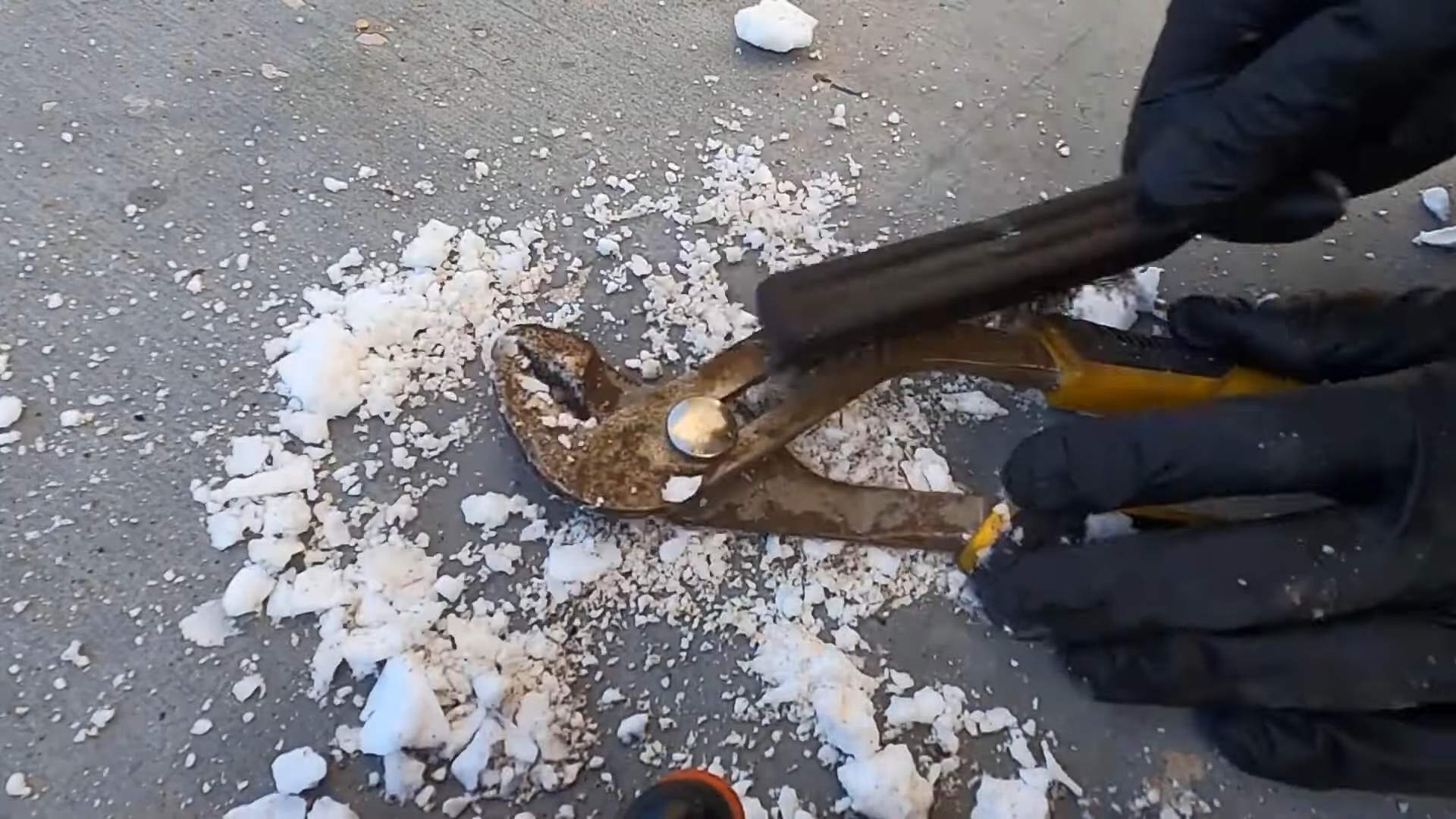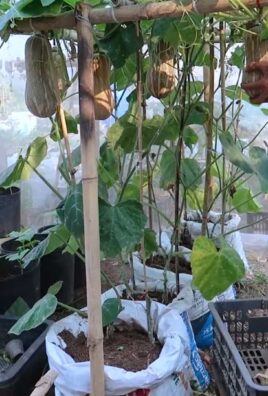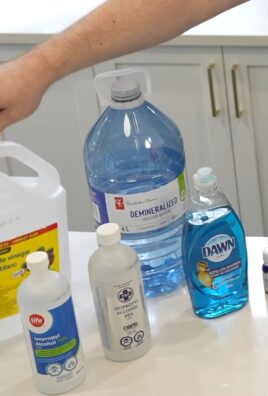Baking Soda Home Cleaning Hacks: Unlock the sparkling potential of your home with one simple ingredient! Are you tired of harsh chemicals and expensive cleaning products cluttering your cabinets? I know I was! For generations, baking soda, also known as sodium bicarbonate, has been a trusted household staple, not just for baking delicious treats, but also for its incredible cleaning power. From ancient Egyptians using it in cleaning rituals to our grandmothers relying on it for everyday chores, baking soda’s versatility is undeniable.
But why should you embrace baking soda home cleaning hacks now? Well, in today’s world, we’re all looking for eco-friendly, cost-effective solutions. And that’s where baking soda shines! It’s non-toxic, readily available, and incredibly effective at tackling a wide range of cleaning tasks. This DIY article will reveal some of the most ingenious and practical baking soda home cleaning hacks to help you ditch the chemicals and embrace a cleaner, greener, and more budget-friendly home. Get ready to be amazed by the magic of baking soda!

Baking Soda: Your Secret Weapon for a Sparkling Home
Okay, friends, let’s talk about baking soda. You probably have a box sitting in your fridge, maybe to absorb odors, but did you know it’s a powerhouse cleaner? Seriously, this humble ingredient can tackle grime, deodorize, and even polish, all without harsh chemicals. I’m going to share some of my favorite baking soda cleaning hacks that will leave your home fresh and sparkling. Get ready to ditch those expensive cleaners and embrace the power of baking soda!
General Baking Soda Cleaning Tips
Before we dive into specific hacks, let’s cover some ground rules:
* Always test in an inconspicuous area first. Even though baking soda is gentle, it’s always best to be safe, especially on delicate surfaces.
* Use a damp cloth or sponge. Baking soda works best when slightly moistened.
* Rinse thoroughly. Make sure to remove all traces of baking soda residue after cleaning.
* Don’t mix with vinegar in a closed container. This creates carbon dioxide, which can cause pressure to build up and potentially explode. While the volcano science experiment is fun, it’s not what we’re going for here!
* Store your baking soda in an airtight container. This will prevent it from absorbing odors and moisture from the air.
Cleaning the Kitchen with Baking Soda
The kitchen is often the dirtiest room in the house, but baking soda can make cleaning a breeze.
Cleaning the Oven
Burnt-on food and grease can make your oven look and smell terrible. Here’s how to clean it with baking soda:
1. Remove oven racks. Soak them in hot, soapy water.
2. Make a baking soda paste. Mix 1/2 cup of baking soda with a few tablespoons of water to form a spreadable paste.
3. Coat the oven interior. Spread the paste all over the inside of your oven, avoiding the heating elements.
4. Let it sit overnight. This gives the baking soda time to loosen the grime.
5. Scrub and wipe clean. The next day, use a damp sponge or cloth to scrub away the loosened grime. You may need to use a scraper for stubborn spots.
6. Rinse thoroughly. Wipe the oven down with a clean, damp cloth to remove any remaining baking soda residue.
7. Replace the oven racks. Once the racks are clean and dry, put them back in the oven.
Cleaning the Microwave
Microwaves can get splattered with food and become breeding grounds for bacteria. Here’s how to clean yours with baking soda:
1. Make a baking soda solution. Mix 2 tablespoons of baking soda with 1 cup of water in a microwave-safe bowl.
2. Microwave for 2-3 minutes. This will create steam that loosens the grime.
3. Let it sit for 5 minutes. Don’t open the door right away! Let the steam work its magic.
4. Wipe clean. Carefully remove the bowl and wipe down the inside of the microwave with a damp cloth.
5. Clean the turntable. Wash the turntable with warm, soapy water.
Cleaning the Sink
Sinks can harbor bacteria and develop stains. Baking soda can help keep them clean and fresh.
1. Sprinkle baking soda in the sink. Cover the entire surface of the sink with a generous layer of baking soda.
2. Scrub with a damp sponge. Use a damp sponge to scrub the sink, paying attention to any stains or grime.
3. Rinse thoroughly. Rinse the sink with water to remove the baking soda residue.
4. For extra cleaning power, add lemon juice. After rinsing, squeeze some lemon juice into the sink and let it sit for a few minutes before rinsing again. The lemon juice will help to disinfect and deodorize the sink.
Cleaning Cutting Boards
Cutting boards, especially wooden ones, can absorb odors and bacteria.
1. Sprinkle baking soda on the cutting board. Cover the surface with a generous layer of baking soda.
2. Scrub with a damp sponge or brush. Use a damp sponge or brush to scrub the cutting board, paying attention to any stains or odors.
3. Rinse thoroughly. Rinse the cutting board with water to remove the baking soda residue.
4. For extra deodorizing, add lemon juice. After rinsing, rub the cutting board with half a lemon and let it sit for a few minutes before rinsing again.
Cleaning the Bathroom with Baking Soda
The bathroom is another area that can benefit from the cleaning power of baking soda.
Cleaning the Toilet
Toilets can be a breeding ground for bacteria and stains.
1. Pour 1 cup of baking soda into the toilet bowl.
2. Let it sit for at least 1 hour, or preferably overnight. This will give the baking soda time to loosen any stains or grime.
3. Scrub with a toilet brush. Use a toilet brush to scrub the bowl, paying attention to any stains or buildup.
4. Flush the toilet.
Cleaning the Shower and Tub
Soap scum and mildew can make your shower and tub look dirty and uninviting.
1. Make a baking soda paste. Mix 1/2 cup of baking soda with a few tablespoons of water to form a spreadable paste.
2. Apply the paste to the shower and tub. Spread the paste all over the surfaces, paying attention to areas with soap scum or mildew.
3. Let it sit for 15-20 minutes.
4. Scrub with a sponge or brush. Use a sponge or brush to scrub the surfaces, paying attention to any stubborn stains.
5. Rinse thoroughly. Rinse the shower and tub with water to remove the baking soda residue.
Cleaning Grout
Grout can easily become stained and discolored.
1. Make a baking soda paste. Mix 1/2 cup of baking soda with a few tablespoons of water to form a spreadable paste.
2. Apply the paste to the grout. Spread the paste all over the grout lines.
3. Let it sit for 10-15 minutes.
4. Scrub with a grout brush or old toothbrush. Use a grout brush or old toothbrush to scrub the grout lines, paying attention to any stains or discoloration.
5. Rinse thoroughly. Rinse the grout with water to remove the baking soda residue.
Deodorizing with Baking Soda
Baking soda is a natural deodorizer that can absorb odors without masking them with fragrances.
Deodorizing the Refrigerator
A box of baking soda in the refrigerator can help absorb odors and keep your food smelling fresh.
1. Open a box of baking soda.
2. Place the box in the refrigerator.
3. Replace the box every 3 months.
Deodorizing Carpets and Rugs
Baking soda can help freshen up carpets and rugs by absorbing odors.
1. Sprinkle baking soda on the carpet or rug. Cover the entire surface with a generous layer of baking soda.
2. Let it sit for at least 15 minutes, or preferably overnight.
3. Vacuum thoroughly.
Deodorizing Shoes
Smelly shoes can be embarrassing, but baking soda can help.
1. Sprinkle baking soda inside the shoes.
2. Let it sit overnight.
3. Shake out the baking soda in the morning.
Other Uses for Baking Soda
Baking soda has many other uses around the house, including:
* Polishing silver: Make a paste of baking soda and water and rub it on your silver to remove tarnish.
* Cleaning coffee and tea stains: Scrub stained mugs and teapots with a paste of baking soda and water.
* Removing crayon marks from walls: Gently rub the crayon marks with a damp sponge sprinkled with baking soda.
* Cleaning your toothbrush: Soak your toothbrush in a solution of baking soda and water to kill bacteria.
* Soothing insect bites: Make a paste of baking soda and water and apply it to insect bites to relieve itching.
Important Considerations
While baking soda is generally safe, there are a few things to keep in mind:
* Avoid using baking soda on delicate surfaces like gold, aluminum, or waxed floors.
* If you have sensitive skin, wear gloves when using baking soda.
* Keep baking soda out of reach of children and pets.
So there you have it! A whole arsenal of cleaning power packed into one humble box of baking soda. I hope these tips help you keep your home sparkling clean and fresh, naturally! Happy cleaning!

Conclusion
So, there you have it! A treasure trove of baking soda home cleaning hacks that will revolutionize your cleaning routine. Forget harsh chemicals and expensive cleaners; this humble pantry staple is your new best friend for a sparkling clean home. We’ve explored how baking soda can tackle everything from stubborn oven grime to lingering odors, proving its versatility and effectiveness.
But why is this DIY approach a must-try? It’s simple: it’s effective, affordable, eco-friendly, and safe. You’re saving money by avoiding pricey commercial cleaners, reducing your exposure to potentially harmful chemicals, and minimizing your environmental impact. Plus, the satisfaction of creating your own cleaning solutions is incredibly rewarding.
Baking soda is truly a cleaning powerhouse.
Ready to take your baking soda cleaning game to the next level? Here are a few suggestions and variations to experiment with:
* **Essential Oil Boost:** Add a few drops of your favorite essential oil (like lemon, lavender, or tea tree) to your baking soda cleaning solutions for an extra burst of freshness and added antibacterial properties.
* **Vinegar Power-Up:** While baking soda and vinegar create a fun fizzing reaction, remember to use them separately for optimal cleaning. Use baking soda first to scrub, then follow with vinegar to rinse and disinfect.
* **Paste Variations:** Adjust the consistency of your baking soda paste to suit different surfaces. For delicate surfaces, use a thinner paste. For tougher stains, create a thicker, more abrasive paste.
* **Citrus Infusion:** Infuse your baking soda with citrus peels (lemon, orange, grapefruit) for a natural, fragrant cleaner. Simply place citrus peels in a jar of baking soda for a few days, then remove the peels and use the infused baking soda as usual.
* **Baking Soda and Salt Scrub:** Combine baking soda with coarse salt for an even more abrasive scrub, perfect for tackling burnt-on food in pots and pans.
We’re confident that once you experience the cleaning power of baking soda, you’ll never look back. It’s a game-changer for anyone seeking a natural, effective, and budget-friendly way to keep their home clean and fresh.
Now, it’s your turn! We encourage you to try these baking soda home cleaning hacks and share your experiences with us. Let us know which hacks worked best for you, any variations you tried, and any other creative uses you discovered. Share your tips and tricks in the comments below – we can all learn from each other! Happy cleaning!
Frequently Asked Questions (FAQ)
Is baking soda safe to use on all surfaces?
While baking soda is generally safe, it’s always a good idea to test it on an inconspicuous area first, especially on delicate surfaces like polished wood or certain types of stone. Avoid using baking soda on aluminum, as it can cause discoloration. For gold plated items, it is best to avoid using baking soda as it can scratch the surface. When in doubt, consult the manufacturer’s instructions for your specific surface.
Can I mix baking soda with bleach?
No! Mixing baking soda with bleach is extremely dangerous and can create toxic fumes. Never mix baking soda with any other cleaning products unless specifically instructed to do so in a reliable recipe. Always prioritize safety when cleaning.
How long does baking soda last?
Unopened baking soda has an indefinite shelf life. Once opened, it’s best to use it within six months to a year for optimal leavening power in baking. However, for cleaning purposes, opened baking soda can still be effective for much longer. You can test its potency by placing a small amount in a bowl and adding vinegar. If it fizzes vigorously, it’s still good to use.
Does baking soda really eliminate odors?
Yes, baking soda is a natural odor absorber. It works by neutralizing acidic and alkaline odor molecules. This is why it’s so effective at freshening refrigerators, carpets, and other areas prone to unpleasant smells. Simply place an open box of baking soda in the affected area to absorb odors. For carpets, sprinkle baking soda, let it sit for 15-30 minutes, and then vacuum it up.
How can I use baking soda to clean my oven?
To clean your oven with baking soda, make a paste of baking soda and water. Spread the paste all over the inside of your oven, avoiding the heating elements. Let it sit overnight. The next day, wipe away the paste with a damp cloth. For stubborn grime, use a scraper or sponge. You can also spray vinegar on the remaining residue to help loosen it.
What’s the best way to clean a clogged drain with baking soda?
For a clogged drain, pour about 1 cup of baking soda down the drain, followed by 1 cup of vinegar. Let it fizz for 30 minutes, then flush with hot water. This method can help break down grease and debris that are causing the clog. For more severe clogs, you may need to repeat the process or use a drain snake.
Can I use baking soda to whiten my teeth?
While baking soda can help remove surface stains from teeth, it’s important to use it sparingly and gently. Overuse can erode tooth enamel. Consult with your dentist before using baking soda as a teeth whitener. There are many toothpastes that contain baking soda that are designed to be used daily.
Is baking soda the same as baking powder?
No, baking soda and baking powder are not the same. Baking soda is pure sodium bicarbonate, while baking powder contains baking soda plus an acidifying agent and a drying agent. They are used for different purposes in baking. Baking soda requires an acidic ingredient to activate, while baking powder is self-activating.
How do I store baking soda properly?
Store baking soda in an airtight container in a cool, dry place. This will help prevent it from absorbing moisture and odors from the surrounding environment.
What are some other uses for baking soda besides cleaning?
Baking soda has a wide range of uses beyond cleaning, including:
* **Baking:** As a leavening agent in baked goods.
* **Deodorizing:** Absorbing odors in refrigerators, closets, and other areas.
* **Soothing skin irritations:** Adding baking soda to a bath can help relieve itching and irritation from insect bites
So, there you have it! A treasure trove of baking soda home cleaning hacks that will revolutionize your cleaning routine. Forget harsh chemicals and expensive cleaners; this humble pantry staple is your new best friend for a sparkling clean home. We’ve explored how baking soda can tackle everything from stubborn oven grime to lingering odors, proving its versatility and effectiveness.
But why is this DIY approach a must-try? It’s simple: it’s effective, affordable, eco-friendly, and safe. You’re saving money by avoiding pricey commercial cleaners, reducing your exposure to potentially harmful chemicals, and minimizing your environmental impact. Plus, the satisfaction of creating your own cleaning solutions is incredibly rewarding.
Baking soda is truly a cleaning powerhouse.
Ready to take your baking soda cleaning game to the next level? Here are a few suggestions and variations to experiment with:
* **Essential Oil Boost:** Add a few drops of your favorite essential oil (like lemon, lavender, or tea tree) to your baking soda cleaning solutions for an extra burst of freshness and added antibacterial properties.
* **Vinegar Power-Up:** While baking soda and vinegar create a fun fizzing reaction, remember to use them separately for optimal cleaning. Use baking soda first to scrub, then follow with vinegar to rinse and disinfect.
* **Paste Variations:** Adjust the consistency of your baking soda paste to suit different surfaces. For delicate surfaces, use a thinner paste. For tougher stains, create a thicker, more abrasive paste.
* **Citrus Infusion:** Infuse your baking soda with citrus peels (lemon, orange, grapefruit) for a natural, fragrant cleaner. Simply place citrus peels in a jar of baking soda for a few days, then remove the peels and use the infused baking soda as usual.
* **Baking Soda and Salt Scrub:** Combine baking soda with coarse salt for an even more abrasive scrub, perfect for tackling burnt-on food in pots and pans.
We’re confident that once you experience the cleaning power of baking soda, you’ll never look back. It’s a game-changer for anyone seeking a natural, effective, and budget-friendly way to keep their home clean and fresh.
Now, it’s your turn! We encourage you to try these baking soda home cleaning hacks and share your experiences with us. Let us know which hacks worked best for you, any variations you tried, and any other creative uses you discovered. Share your tips and tricks in the comments below – we can all learn from each other! Happy cleaning!
Frequently Asked Questions (FAQ)
Is baking soda safe to use on all surfaces?
While baking soda is generally safe, it’s always a good idea to test it on an inconspicuous area first, especially on delicate surfaces like polished wood or certain types of stone. Avoid using baking soda on aluminum, as it can cause discoloration. For gold plated items, it is best to avoid using baking soda as it can scratch the surface. When in doubt, consult the manufacturer’s instructions for your specific surface.
Can I mix baking soda with bleach?
No! Mixing baking soda with bleach is extremely dangerous and can create toxic fumes. Never mix baking soda with any other cleaning products unless specifically instructed to do so in a reliable recipe. Always prioritize safety when cleaning.
How long does baking soda last?
Unopened baking soda has an indefinite shelf life. Once opened, it’s best to use it within six months to a year for optimal leavening power in baking. However, for cleaning purposes, opened baking soda can still be effective for much longer. You can test its potency by placing a small amount in a bowl and adding vinegar. If it fizzes vigorously, it’s still good to use.
Does baking soda really eliminate odors?
Yes, baking soda is a natural odor absorber. It works by neutralizing acidic and alkaline odor molecules. This is why it’s so effective at freshening refrigerators, carpets, and other areas prone to unpleasant smells. Simply place an open box of baking soda in the affected area to absorb odors. For carpets, sprinkle baking soda, let it sit for 15-30 minutes, and then vacuum it up.
How can I use baking soda to clean my oven?
To clean your oven with baking soda, make a paste of baking soda and water. Spread the paste all over the inside of your oven, avoiding the heating elements. Let it sit overnight. The next day, wipe away the paste with a damp cloth. For stubborn grime, use a scraper or sponge. You can also spray vinegar on the remaining residue to help loosen it.
What’s the best way to clean a clogged drain with baking soda?
For a clogged drain, pour about 1 cup of baking soda down the drain, followed by 1 cup of vinegar. Let it fizz for 30 minutes, then flush with hot water. This method can help break down grease and debris that are causing the clog. For more severe clogs, you may need to repeat the process or use a drain snake.
Can I use baking soda to whiten my teeth?
While baking soda can help remove surface stains from teeth, it’s important to use it sparingly and gently. Overuse can erode tooth enamel. Consult with your dentist before using baking soda as a teeth whitener. There are many toothpastes that contain baking soda that are designed to be used daily.
Is baking soda the same as baking powder?
No, baking soda and baking powder are not the same. Baking soda is pure sodium bicarbonate, while baking powder contains baking soda plus an acidifying agent and a drying agent. They are used for different purposes in baking. Baking soda requires an acidic ingredient to activate, while baking powder is self-activating.
How do I store baking soda properly?
Store baking soda in an airtight container in a cool, dry place. This will help prevent it from absorbing moisture and odors from the surrounding environment.
What are some other uses for baking soda besides cleaning?
Baking soda has a wide range of uses beyond cleaning, including:
* **Baking:** As a leavening agent in baked goods.
* **Deodorizing:** Absorbing odors in refrigerators, closets, and other areas.
* **Soothing skin irritations:** Adding baking soda to a bath can help relieve itching and irritation from insect bites, sunburn, and poison ivy.
* **Relieving heartburn:** A small amount of baking soda mixed with water can help neutralize stomach acid and relieve heartburn. (Consult with a doctor before using baking soda for medicinal purposes.)
* **Gardening:** Baking soda can be used to sweeten tomatoes and control fungal diseases in plants.
Can baking soda remove hard water stains?
Yes, baking soda can be effective in removing hard water stains. Make a paste of baking soda and water, apply it to the stained area, let it sit for a few minutes, and then scrub with a non-abrasive sponge or cloth. Rinse thoroughly with water. For tougher stains, you can add vinegar to the paste.
How can I use baking soda to clean my washing machine?
To clean your washing machine with baking soda, add 1/2 cup of baking soda to the drum and run a normal wash cycle with hot water. You can also add 1/2 cup of vinegar to the dispenser for extra cleaning power. This will help remove detergent buildup, odors, and mildew.
Is baking soda safe for septic systems?
Yes, baking soda is generally safe for septic systems. It’s a natural substance that won’t harm the beneficial bacteria in your septic tank. In fact, it can even help balance the pH levels in your septic system.
Can I use baking soda to clean my dishwasher?
Yes, you can use baking soda to clean your dishwasher. Sprinkle a cup of baking soda on the bottom of your dishwasher and run a normal cycle. This will help freshen the dishwasher and remove food particles. You can also add a cup of vinegar to the top rack for extra cleaning power.
How often should I clean with baking soda?
The frequency of cleaning with baking soda depends on the specific application. For general cleaning, you can use baking soda as needed. For odor absorption, replace the baking soda every month or two. For cleaning appliances like ovens and washing machines, you can clean them with baking soda every few months.




Leave a Comment